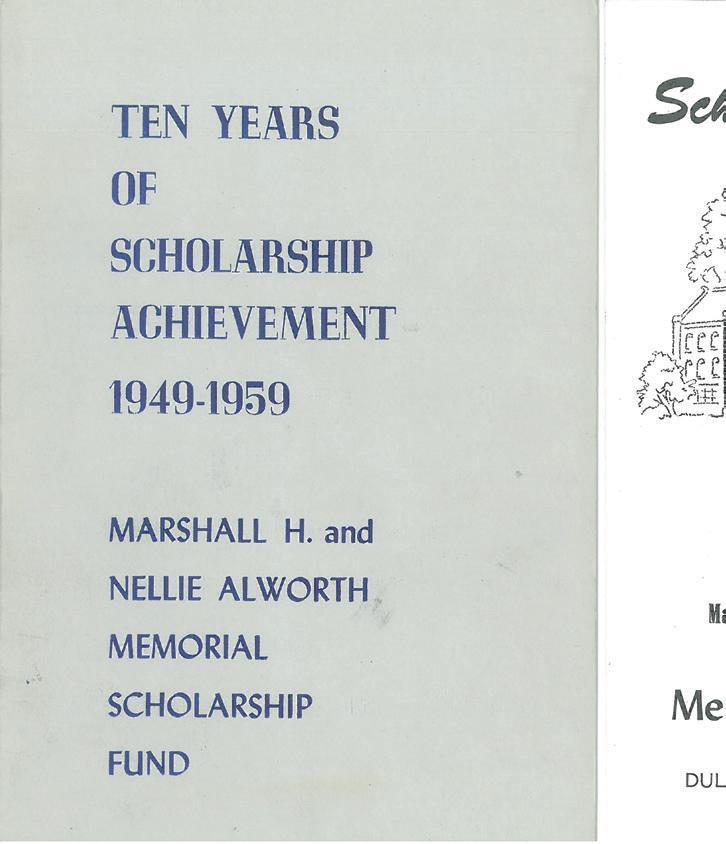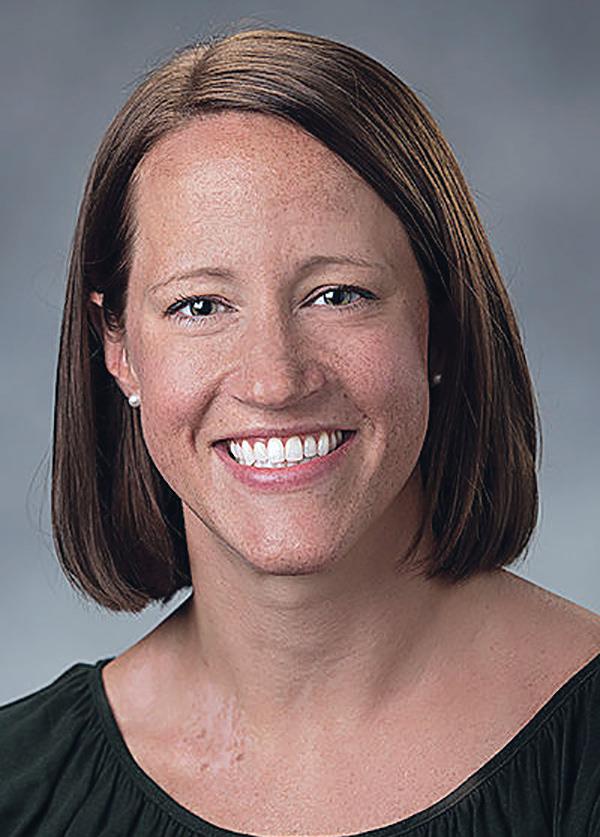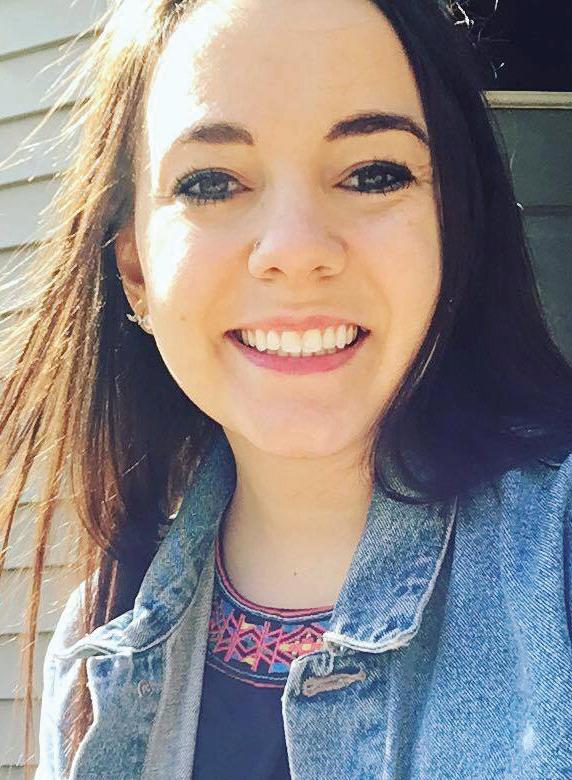
6 minute read
SCHOLARSHIPS give students a hand up
Millions of dollars available in the Northland
BY ANDREA NOVEL BUCK PHOTOGRAPHY BY DAVID BALLARD
Concerned about your children being able to afford college?
According to the College Board, the average cost of tuition and fees for the 2017–18 school year was $34,740 at private colleges, $9,970 for state residents at public colleges, and $25,620 for out-of-state residents at public colleges. That’s for a single year.
In addition to starting a 529 or other college savings account, what can parents do? Encourage your high school senior to apply for scholarships.
Noah Squires did. The scholarships he received fully paid his first two years’ tuition at Itasca Community College. They continue to help fund his $23,000-a-year tuition at Michigan Technical University, where he is in his third year of study toward a bachelor’s degree in mechanical engineering. Over the four years, he will have received well over $30,000 from a variety of renewable scholarships and one-time awards.
As a result, Squires hasn’t had to work during the school year. He has been able to concentrate on his studies, pursue opportunities like participating in the Society of Automotive Engineers’ “Clean Snowmobile Challenge” to re-engineer a snowmobile with decreased emissions and noise and increased fuel efficiency, and land paid internships in his field. Last summer, he worked at Polaris on a snowmobile powertrain development team. This summer through next, he will work at Bobcat on a new product development team for skid loaders.
A Lot Of Money
In the Northland, roughly $4.3 million in scholarship opportunities are available annually.
“That’s a lot of money,” said Patty Salo Downs, executive director of the Alworth Memorial Fund in Duluth. In its 70th year this spring, the fund awarded its 5,000th scholarship and surpassed a milestone of $50 million in awards.

“And, it’s not a fixed list,” said David Hammer, scholarship officer at the Duluth Superior Area Community Foundation, who oversees the awarding of 65 different scholarship funds. “It’s growing all the time.”
AMONG THE BIGGIES:
• $10,000 Marguerite Gilmore scholarships, renewable for four years, for Northland area high school students who graduate in the upper 8 percent of their classes.
• $5,000 Marshall H. and Nellie Alworth scholarships, renewable for four years, for Northland area students with a grade point average of 3.5 or higher studying in the science, technology, engineering and mathematics fields.


• $5,000 Robert B. and Sophia Whiteside scholarships, renewable for four years, for graduating seniors from Duluth public and private high schools in the top 10 percent of their classes.
• $3,000 Marie Saltwick scholarships and $3,000 Armond H. Hauge scholarships, renewable for four years, for graduating seniors with a GPA of 2.8 or higher from Denfeld High School.
“The beauty of these scholarships is, we have kids able to graduate debt-free,” Salo Downs said.
WHAT’S THE CATCH?
Lori Huska, scholarship administrator for Northland Scholarship Services, which oversees 13 different scholarship funds for Denfeld High School students, has seen local scholarship dollars left on the table because students didn’t apply or didn’t take the time to complete their applications.

“It’s amazing to me,” Huska said.
“Some kids self-select themselves out of the running,” Salo Downs said, thinking they need to be at the top of their class.
That isn’t necessarily so. Some scholarships require only a 2.5 GPA. Some are for late bloomers, students who for some unfortunate circumstance in their lives, haven’t realized their potential in high school. Some are for children or grandchildren of a specific company’s employees. Some are targeted to a specific college, field of study or trade. A couple go to students with children.


Squires took to heart the advice of his Northwoods High School guidance counselor: “Don’t count yourself out of a scholarship before you apply; sometimes your chances are pretty good.” He turned out to be a better candidate than he thought, he said, securing several scholarships. They included a $5,000 renewable Alworth scholarship, for which his high school biology teacher recommended him. “It was pretty awesome,” he said.
Apply Early And Completely
Applications for scholarships from the Alworth Memorial Fund, Duluth Superior Area Community Foundation and Northland Scholarship Services can be made online. Some require an additional essay, which might take a student a few hours to complete. Some require an interview. Most are due in midJanuary, but students can start applying in the fall.
Compare that to how many hours it takes to earn $20,000 at a minimum-wage job. The return is huge, Salo Downs said. “Help your kids understand that putting these applications in is well worth their time.”
Salo Downs has counseled many a young person to consider scholarships as a viable option to funding college. Have a dollar goal and apply for one scholarship a week, she advises. She knows one student who did that and walked away with $120,000.
“I put a lot of time and effort into it,” Squires said of his Alworth application, which he worked on over a couple of months. He was thoughtful about whom he asked for recommendations and worked hard on the essay — writing and rewriting it, as parents, teachers and friends reviewed it and offered advice.
“I just had to make it a priority,” he said.
Prepare Even Earlier
Each school year, Salo Downs, Hammer and Huska talk to high school seniors, alerting them to the scholarship money that’s available and when applications open and are due. They also talk to freshmen about navigating their high school years to become strong scholarship contenders.
What’s important? Academics, grades, school activities, sports, community and volunteer activities, jobs — all count.
“I think that people who make the most of their time in high school, that transfers to scholarships,” Salo Downs said. “And the students who make the most of their time in college, that transfers to getting their dream job or advanced degree.”
The three recommend students track everything they do in high school from ninth grade on — keeping a list of awards, activities, sports, volunteering, even jobs such as walking dogs or shoveling neighbors’ sidewalks, and the number of years involved in each. “We’ll ask you how many times you picked up garbage by the side of the road,” Hammer said.
Hammer also urges students to develop relationships with their teachers, employers or people they work for as volunteers. He reads many reference letters that are a list of activities, but only a handful that say a student is a really great kid.
“I would tell parents, even middle school counts,” Huska said. “That’s where you lay the groundwork for taking higher classes.” And more rigorous courses lead to higher college entrance exam scores. “The key is a good ACT score — that allows you to get merit scholarships.”
What helped Squires, who applied for 15 to 20 different scholarships his senior year? He continues to apply for new scholarships through his university and other organizations.


He “did well” in school, took a lot of college courses, was on his high school basketball, track and cross-country teams, volunteered at church, helped with youth basketball, and worked summers at a resort on Lake Vermilion.
“The cost really adds up — especially at a university,” Squires said. Beyond tuition, he must pay for his living expenses: rent, utilities, food and fuel. His textbooks this year cost $800, he said, “but without any debt from my first two years of school, I am not as worried about digging a financial hole for myself when I graduate.” —
MDT
ALWORTH SCHOLARSHIP RECIPIENT: DR. CLAIRE MALLOF
Dr. Claire Mallof is a 2000 graduate of Bemidji High School. During high school, she worked hard academically with the goal to earn as many scholarships as possible to help pay for college, including medical school. During her senior year, Mallof was awarded an Alworth scholarship.

“Being a recipient of the Alworth scholarship changed the entire course of my life,” she said. “I was able to focus on my studies without worrying about how I would pay for tuition.”
Mallof said she was initially planning to follow in her aunt’s footsteps and go into family practice.

“But I went to work with her one day,” she said, “and she was delivering a baby. It was the most amazing thing I had ever seen.”
That was the day she decided to pursue obstetrics and gynecology.
Mallof chose to attend Marquette University in Milwaukee, partly because of their focus on both education and service. She began her career at a private practice in Minneapolis before moving to her current position as an OB/GYN at St. Luke’s in Duluth in September 2014.
— Andrea Busche
ALWORTH SCHOLARSHIP RECIPIENT: EMILY WARNER

Emily Warner was a 2013 graduate of Hibbing High School and a 2016 graduate of the University of Minnesota-Duluth’s mathematics/statistics actuarial science program. She is a recent recipient of the Alworth scholarship, and received $20,000 toward her college education.

Warner said graduating debt-free was part of a strategic plan for her life.


“It was always my goal to graduate from college debt-free because so many students are accumulating large amounts of debt because of school and student loans. I wanted to be different than everyone else and graduate without taking out any loans. I knew it would be tough, and I knew I would have to make sacrifices, but I don’t regret any of my decisions.”
Warner said the scholarship helped her pursue travel and other learning experiences during the summers rather than holding a job just to make ends meet.
“I was blessed to be a recipient of this scholarship,” she said. “And it truly is a gift that keeps on giving.”
Warner now works for events organizer UBM Americas as an audience support analyst. She performs data analysis to help meet the needs of audiences and advertisers. She said she also connects doctors, veterinarians and other medical professionals with the manufacturers of drugs and equipment.
— Andrea Busche










